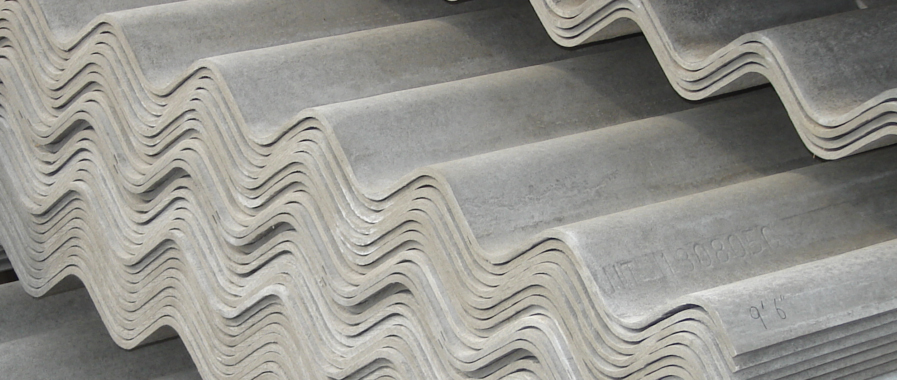August, 1, 2017

Shelter is one of the basic necessities discovered by humans as early as the prehistoric times. The earliest shelters were built using stones, clay and sundried bricks and later materials like timber, glass, concrete as well as steel were invented to fortify the structures. Roofing materials also have undergone major evolution from animal hide and straw to modern day clay tiles, concrete tiles and fibre cement roofing sheets.
Chrysotile Roofing
There are four main categories of roofing materials presently used in Sri Lanka, including Chrysotile cement sheets (commonly known as Asbestos sheets), clay tiles, Galvanized iron sheets and Zinc Aluminium sheets.
Chrysotile fibre cement sheets, which take up 35% of the local roofing market, have been prominently used since 1950. Sri Lanka produces only high-density fibrecement roofing and ceiling products via four manufacturers. Moreover, the industry supports over 30,000 persons through direct and indirect employment.
Redefining Asbestos: White Vs. Blue
Chrysotile fibre cement roofing is more commonly referred to as Asbestos roofing sheets. However, there are two main categories of Asbestos – the white asbestos and the blue/ brown asbestos. Sri Lanka only imports white asbestos also known as Chrysotile. Since 1970, importing of blue and brown asbestos into the country has been banned under the Consumer Protection Act and Imports Regulation Act.
According to the Fibre Cement Product Manufacturers’ Association, White Asbestos also known as Chrysotile fibre is used in over 150 countries across the world including the USA.
Pros and cons of using Chrysotile fibre cement
Unlike its counterparts, Chrysotile fibre cement sheets are cost effective and require less timber for installation, preventing needless felling of trees. Chrysotile sheets are considerably durable and last more than 50 years, requiring minimal maintenance. The high density product comprises of 8% of Chrysotile fibre tightly packed within a strong cement bond.
These sheets are also ideal for use in Sri Lanka’s tropical weather due to their high thermal performance, water tightness and non-conductive nature. Furthermore, Chrysotile is comparatively a non-combustible material adding extra safety and peace of mind to the occupants. Moreover, studies have proven that white asbestos or Chrysotile fibre easily dissolves in the lungs and releases naturally, whereas the brown/ blue asbestos or Amphibole fibres tend to show higher biopersistence, in other words these fibre are not soluble in the lungs and tend to remain in the lungs.
Chrysotile – a target of criticism
The annual consumption of Chrysotile fibre stands at 2 to 3 million tons in the world, out of which Sri Lanka claims 50,000 tons. Currently the material is imported from Russia and Brazil, and the manufacturing process has continued for more than six decades. Despite the constant dialogues on potential health hazards said to have been caused by asbestos, no research so far has been able to prove the fact beyond doubt.
Studies have clearly proven that Amphibole fibres which include Amosite (brown asbestos),Crocidolite (blue asbestos), Tremolite, Actinolite, and Anthophyllite have higher potential in causing health hazards due to their insoluble quality in lungs.
Furthermore, the confusion of naming two distinctively characterised fibre groups – the Chrysotile and Amphibole groups have also contributed to the negative image built around the particular roofing product which in turn may cause a negative impact on the future of the roofing industry.
Video Story